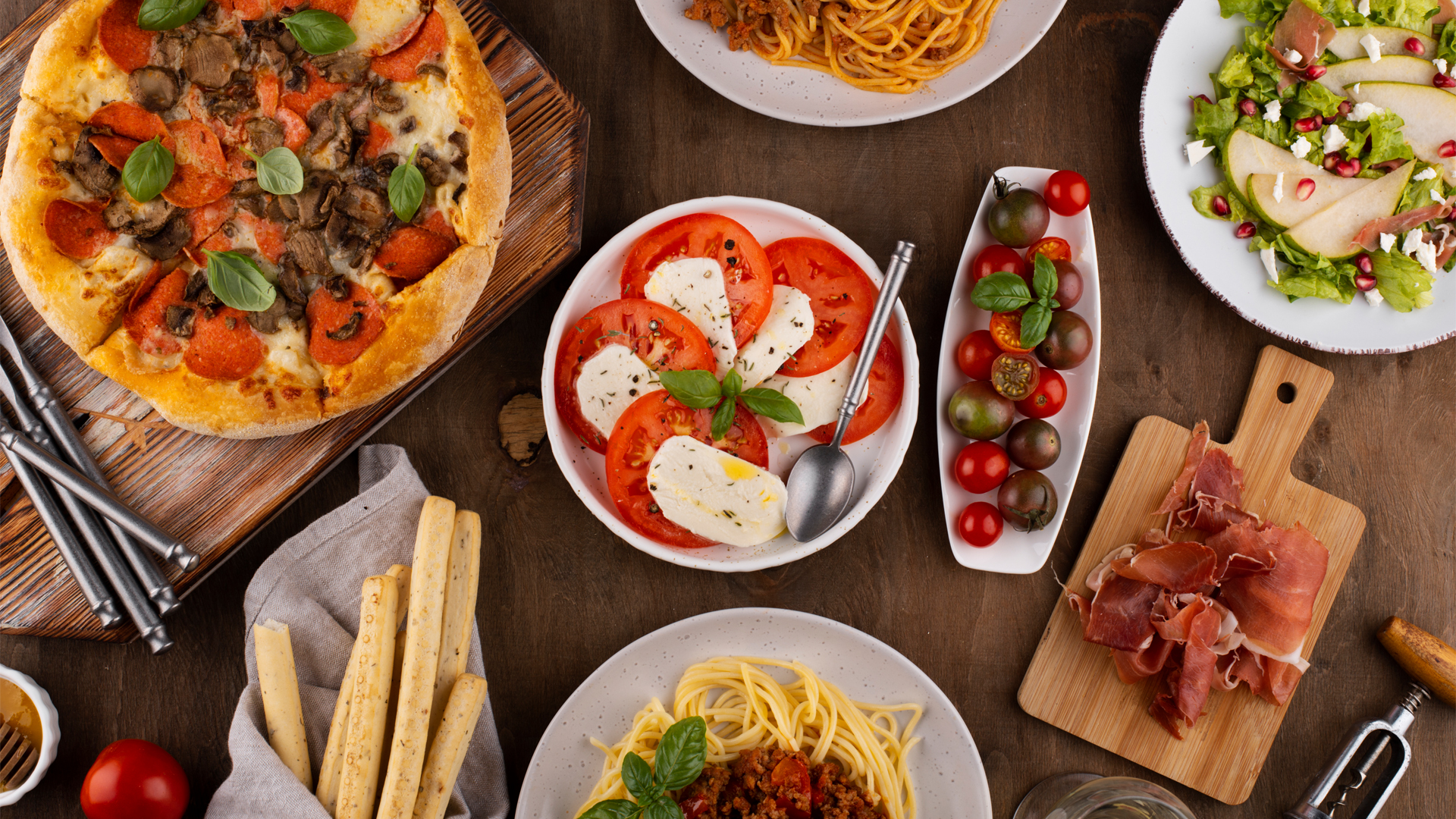The Italian peninsula is divided into twenty regions, five of which have a special statute according to the peculiarities of their territory and history. That’s why, despite the successful export of a unified Italian cuisine, many people reject it. In fact, the country is a kaleidoscope of dialects, colors, landscapes, and cuisines. From North to South and East to West you can find the most diverse ingredients and flavors that taste of sea or mountains, rolling hills or endless plains. Here is a short but intensive trip through ten Italian regions—with apologies in advance for the thousands of recipes we don’t have room to share!
Abruzzo: Sagne e Fasciul

“Forte e Gentile”, strong and kind: those are the adjectives that describe this region. Welcome to four provinces with three national parks and one regional park, a stunning Adriatic coast, three Apennine massifs, and several natural protected areas offering natural green oases and reserves. This is Abruzzo, a mountainous and wooded region with a rich plant and fauna heritage, wild and yet very hospitable. Abruzzo ranks first in Italy for percentage of protected area, equal to 37% of its regional territory.
This traditional peasant dish originated in what Italians call la cucina povera, the kitchen of the poor. Basically, Sagne e Fasciul features homemade pasta made from rustic durum wheat flour—either fettuccine, tagliatelle (flat noodles), or maltagliati (irregularly shaped flat squares)—in a mixture of cannellini or borlotti beans, tomato sauce, peeled tomatoes, celery, carrots, onion, olive oil, salt, and if you like, a bit of chili pepper. The recipe can be enriched with pancetta, ham, or pork rinds.
Basilicata: Rafanata
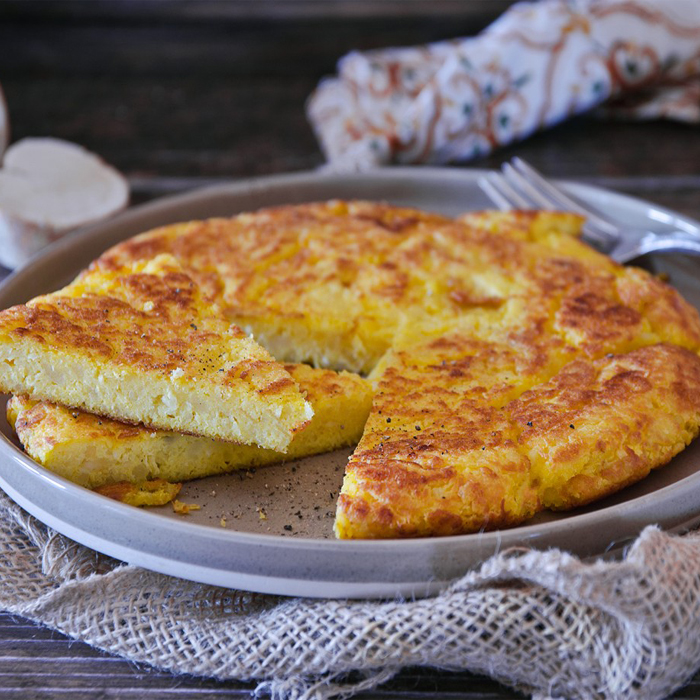
Between Puglia, Campania, and Calabria you'll stumble into the wild and incredibly beautiful Basilicata region. This area bathed by the Tyrrhenian and the Ionian Seas is also called Lucania or Terra della Luce (Land of Light) from the Greek adjective leukos meaning white, lucent. Potenza is the capital but Matera is the region’s best-known city.
This typical dish of Basilicata is made of just four ingredients: grated horseradish, eggs, boiled potatoes, and pecorino cheese. Traditionally prepared for the ancient traditional Carnival, the horseradish, a root with a pungent and slightly spicy flavor, gives Rafanata its unmistakable taste.
Calabria: Baked Black Olives
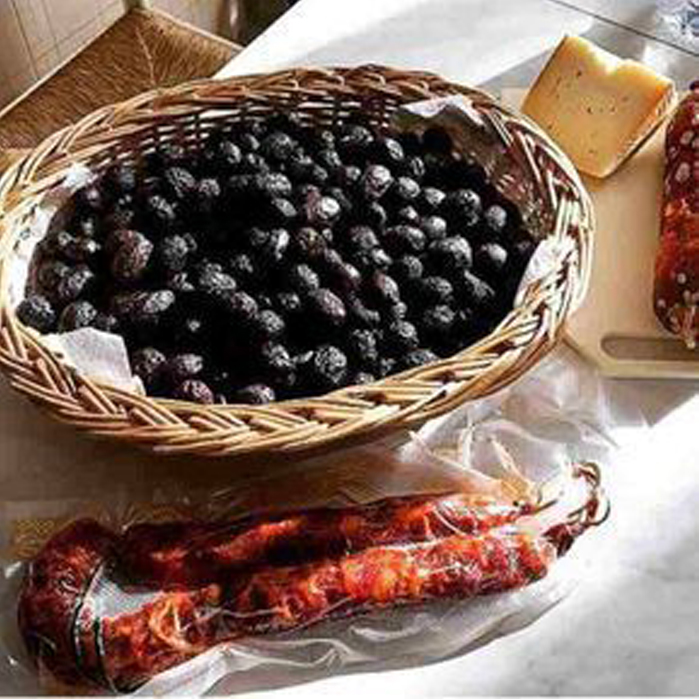
More than many other regions’ cuisine, the Calabrese is a poor and peasant one with numerous dishes strongly linked to religious celebrations. At Christmas and Epiphany people used to put thirteen courses on the table, while at Carnival, macaroni, meatballs, and pork are eaten. But the territory, surrounded by marvelous seas, also offers fish and multiform fruits. Olive trees are part of the landscapes, offering delicious gifts. Try this super easy recipe:
Cut the pulp of the olives with two or three cuts, then put them in cold water for 8-10 days to lose the bitterness, renewing the water two to three times a day. Drain, salt, put some olive oil, season with garlic, oregano and chili pepper, then dry in a low heat oven (30 minutes/ 250 °F). Enjoy it!
Campania: Eggs in Purgatory

This region amazes by blending simplicity and taste in a delicious and fascinating culinary tradition. Favorite ingredients here are vegetables, dairy products, fish, and meat. Campania’s pizza, pasta with tomato sauce, and cake called babà have been exported around the world, ready to conquer with simplicity and taste and become real symbols of the Italian culinary tradition. Thanks to the complicity of seasonal tomatoes, you can try this simple recipe—just add eggs!
Set out 8 eggs, peeled and cut tomatoes, garlic, half an onion, olive oil, salt, pepper, and aromatic herbs such as basil, marjoram, and thyme. In a large pan, fry the chopped onion and garlic clove and the aromatic bunch for 2 minutes in a tablespoon of oil. Add the tomato chunks and cook the sauce for another 10 minutes over low heat. Distribute the sauce in 4 baking trays and make 2 hollows in each. Pour an egg into each hollow without letting them overflow. Cook for 10 minutes and serve with salt, pepper, and basil leaves.
Emilia-Romagna: Gnocco Fritto
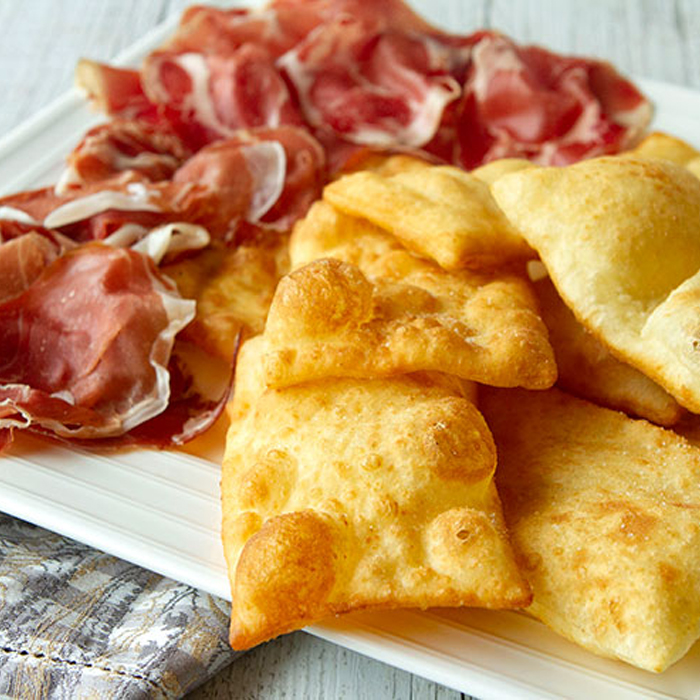
Emilia and Romagna are part of the same region, but their territories couldn’t be more different. From the sea to the mountains or boundless plains and cities rich in history and art to lonely country sides, one thing connects them all: gnocco fritto. For the few who do not know, this is a traditional gastronomic specialty typical of the provinces of Modena and Reggio Emilia. It is a small tasty morsel of slightly leavened dough fried in lard or boiling oil and served still hot and fragrant. Served hot with Felino’s salame or Parma ham is to die for!
Ingredients: Flour, fresh milk, water, sea salt, brewer's yeast, lard, and granulated sugar. The dumplings are fried in peanut oil.
Friuli Venezia-Giulia: Jota
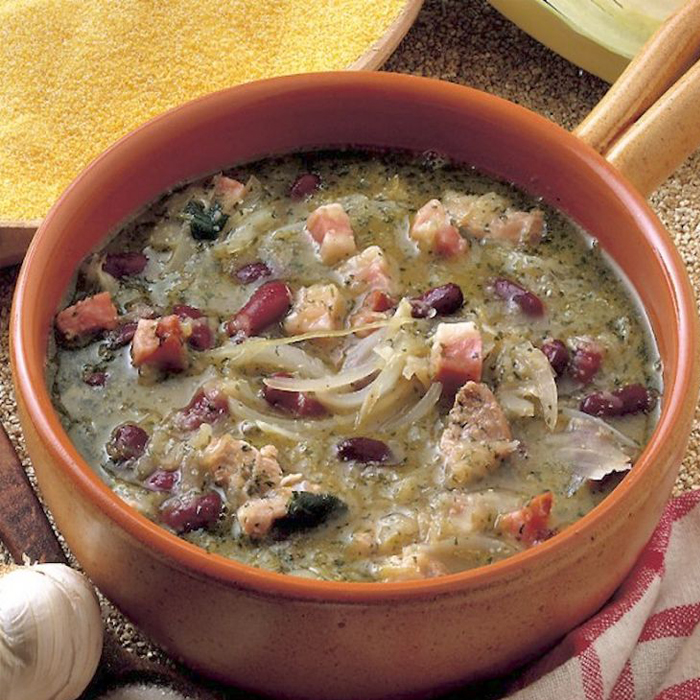
Surrounded almost entirely by stunning but impervious mountains, the Friuli Venezia-Giulia region borders Slovenia to the East, the Veneto region to the West, and the Adriatic sea to South. The region’s capital, Trieste, is a crossroad of cultures and languages and a melting-pot of faces and lifestyles.
Jota is a rustic, one-of-a-kind dish typical to Trieste. A simple yet delicious soup, it contains cream, an unusual ingredient in the Italian kitchen that is more familiar to Eastern Europe. A popular local song highlights this beloved soup: “Simpri jote, simpri jote e mai polente e lat, simpri jerbis, simpri jerbis e mai un biel fantat!” - Always jota, always jota and never polenta and milk, always vegetables, always vegetables and never a nice guy!
Lazio: Fava Beans and Pecorino Cheese
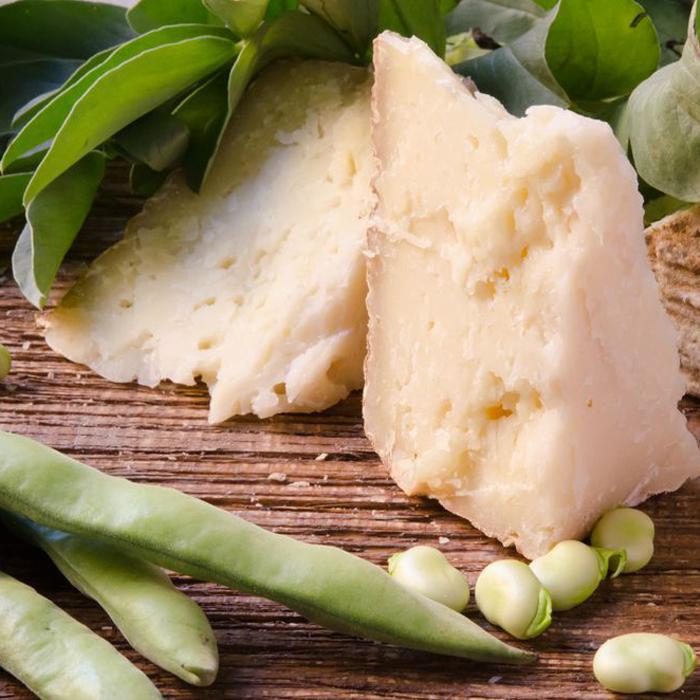
This region is perhaps Italy’s best known all over the world. Lazio is home to the Eternal City of Rome and one of the oldest inhabited regions in European and Italian territory.
These legumes are easily cultivated, have excellent nutritional properties, and are inexpensive, making them one of the poor foods par excellence in Italy. Currently the beans are cultivated throughout the entire Italian territory, but they are particularly widespread in Lazio, Apulia, Sicily, and Sardinia. Fresh raw broad beans are normally eaten together with Pecorino, the typical cheese from Lazio and Central Italy, or fresh homemade pasta.
Liguria: Farinata
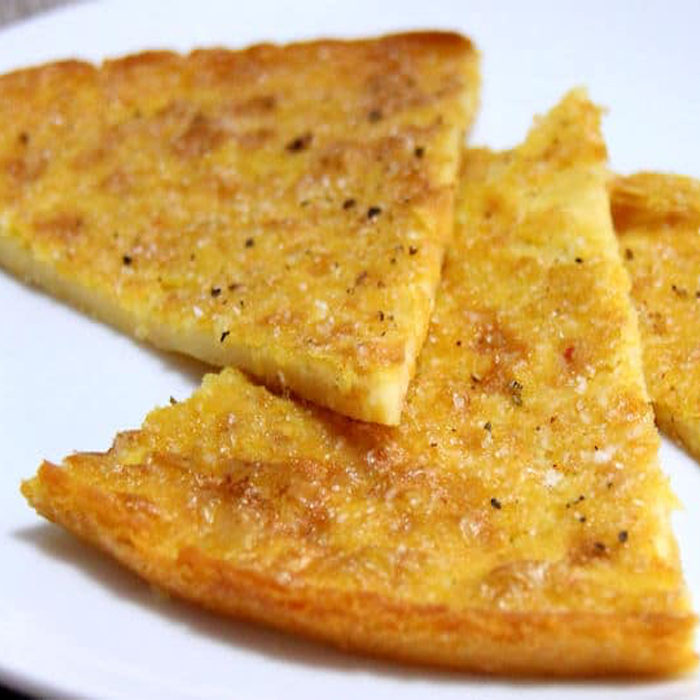
University of Genoa’s professor Quaini says that “Liguria, perhaps more than any other Italian region, has a schizophrenic identity between a coastal landscape too visible to the eyes of travelers who have always appreciated its picturesque beauty, postcard-like, and an internal Liguria, which escapes the superficial eye of the observer, stubbornly attached to a hard and bad land.” Farinata, Liguria’s most typical dish, has a peculiar anecdote related to its creation: it owes its birth to a storm in the open sea. When barrels of oil and sacks of chickpea flour (transported in the hold of a ship engaged in the Battle of Melorìa in 1284) broke, their respective contents, mixing with salt water, gave birth to a sort of thin piadina or rustic flatbread.
A simple dough of chickpea flour, water, salt, and oil is cooked in wide shallow pans called “tian” over very high heat until you get a thin and golden sheet. Thinness is a must of Ligurian cuisine. Popular versions feature bianchetti (small anchovies) or sardines with rosemary and onion-flavored.
Lombardy: Risotto alla Milanese

Lombardy is one of the largest and northernmost regions of Italy, bordering Switzerland, Austria, and four other Italian regions. Its cities have a thousand-year history, its lakes a unique charm (Como, Garda and Iseo), and Milan is the economic capital of the Italian peninsula. Not a single Milanese would give up the typical yellow-colored risotto.
Le Marche: Olive all’Ascolana
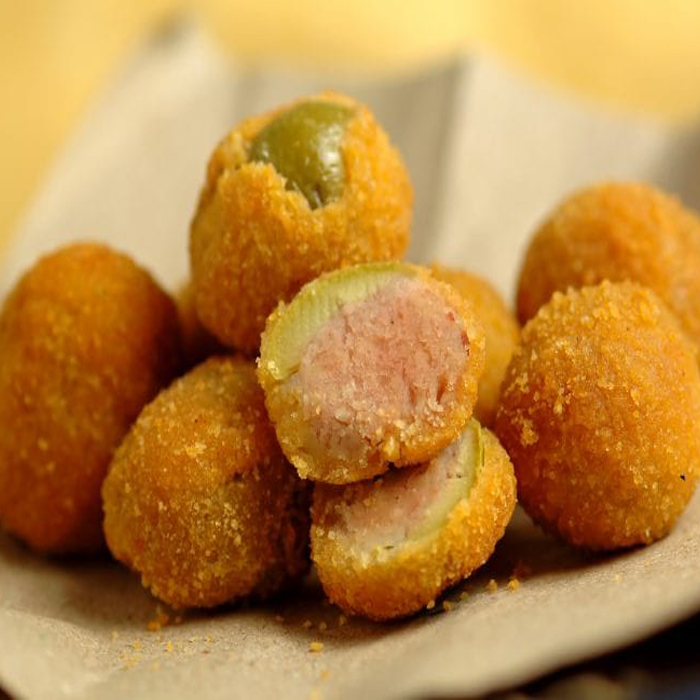
The Adriatic Sea and beautiful hills of Marche have always offered Italy and the world delicious food. The catch is fresh and varied. Land food is delicious and tasty. You can find the best recipes of the entire Italian territory here, but always with a simple and easy-to-store base. Fabulous wines and desserts are more memorable elements of Marche’s culinary culture.
Prepared with very large Marche olives called Ascolana Tenera, this recipe features a stuffing mixture of roasted meats that are chopped and kneaded with egg, grated Parmesan cheese, and nutmeg. They are fried and served hot.
Barbara Benzoni
Barbara Benzoni was born in Milan and lives between Rome and Tuscany. She is devoted to USA, the land of courage and innovation. She’s Peter's super-lucky mum and Ale's wife. Cinema, art, good food and only beautiful things are the themes of her existence. With a degree in Italian literature and a Masters in Sports Management she can both enjoys books and basketball matches. In 25 years she has been organizing sport events all over the world and she’s been lucky enough to meet the greatest champs ever. Curiosity in everyday life and people are her drivers. Her personal icon is Mohammed Ali : "It's not bragging if you can back it up".


